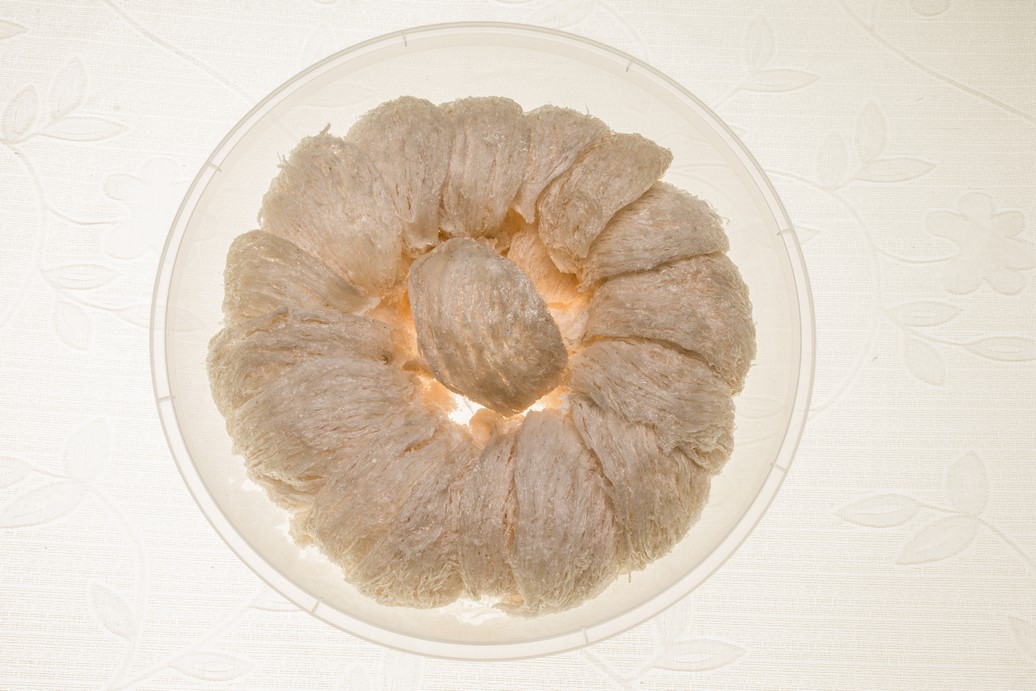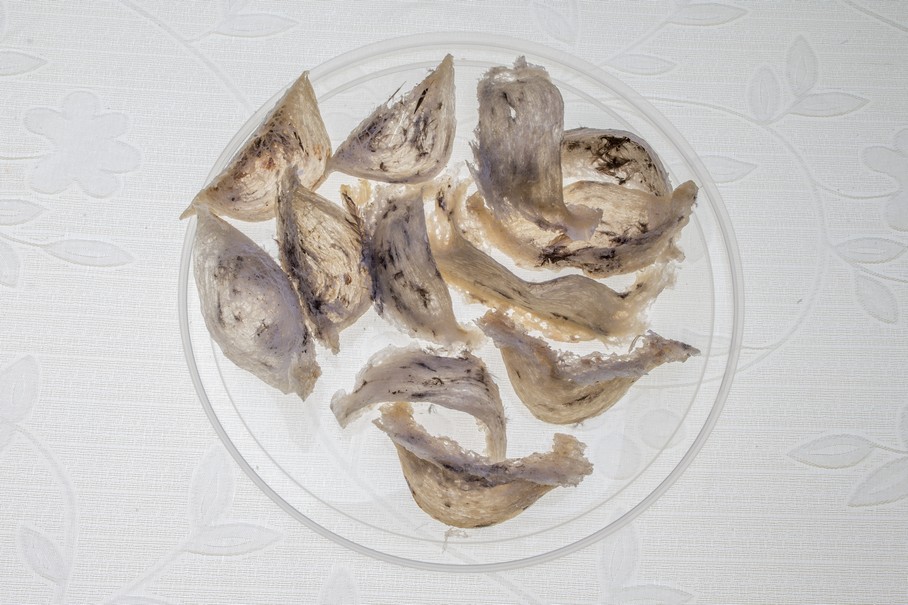|
  |
|
|
|
| How can I tell if the nests I bought are genuine? |
|
|
Genuine Nests - The nest expands in size from about two to two and a half times its original size when soaked. There is also a parallel increase in weight of between six to eight times. - It has a natural albumin smell of protein (like egg white) even after being soaked and cooked. - Original nests have a natural off-white colour with slight dull nest fibre surfaces. - Although the nest has thickly formed fibres, light is still permissible to pass through. - There are no gelatin-like substances on nest surfaces. - The nest fibres are clearly visible on both the inner and outer sides of the nest. |
|
|
| Adulterated Nests - Smells of chemical or bleach. - Little or no expansion when soaked. - Reflective or glossy surfaces from chemical washes. - Gelatin like sticky substances (preservatives) on concave surfaces. - Unique uniformity in colour, usually pure white (bleached) or red (dyed). - Nests are opaque and allows little or no light to pass through; in some cases the convex surfaces appear glossy |
|
| What to look out for when I buy birds' nests? |
|
|
Colour:
Avoid extremely white ones as they may have been bleached. Also, be wary of uniformly colored red (or so called blood) nests. Original nests are never uniform in colour. The edges of natural red nests get its reddish tan from the oxidization of iron minerals found in the walls of caves. They are never uniformly red. Smell:
Genuine nests have a natural albumin scent. Avoid nests that have a smell resembling bleaching agents. Moisture
Avoid buying nests that are too wet and supple. These nests have a higher than normal moisture content and require immediate refrigeration. Besides, encouraging the growth of harmful bacteria and fungi, moisture adds weight to the nests and since bird's nests are sold according to its weight, you could end up paying 30% to 40% higher. Additives
Avoid buying nests that have sticky surfaces. Gelatin-like substances, usually ------ preservatives, have been added to these nests. Again, the nest's original weight has been artificially increased. We have to be careful as some additives can be very harmful to us and some preservatives have been known to be cancer inducing agents. In a nutshell,"Always buy from reliable sources". |
|
| What are good quality birds' nests? |
|
|
Good quality nests: Natural & Pure: Good quality nests should be free from additives, chemicals and colouring. Low Moisture: Good quality nests should be low in moisture. More often than not consumers are actually paying more for moisture instead of natural birds' nests when moisture levels are high. Fresh: Fresh nests require short cooking time. The longer the nest has been left un-harvested, the nest will lose its freshness and as such increase the time taken to prepare it. Like all other food, when kept or cooked for too long, it will invariably lose its nutritional value.
Good Expansion & Water Absorption Capacities: Pure birds' nests absorb water fairly easily and expand gradually upon soaking. Stale or impure nests on the other hand, have much slower expansion rates. If the nest has been injected with additives, an entire nest may even dissolve completely after soaking leaving a few remnants of the original nest.
|
|
| Are pure white nests better? |
|
|
| No. This suggests the nests have undergone chemical bleaching by producers aiming to reduce wastage and processing costs. Instead of leaving the nest in its natural colour, the producers fear that the nests may not be as visually appealing and appear as inferior nests. As such, they have been bleached white to pass off as pure white nests. Be very careful because contaminants and bleaching agents(s) still present, could very well be a potential health hazard, especially if is consumed over a period of time. |
|
| Are yellow nests or red nests more nutritious? |
|
|
| No. These are myths concocted by some retailers to fetch better prices. In fact, labels like 'Golden Silk Nests' and 'Blood Nests' have been given to these nests which in reality, have been altered from its original form. Most of the 'coloured' nests in the market are dyed from white ones. Natural Red nests are very rare and they are only lightly reddish at the edges due to oxidation of iron compounds found in caves walls. Most uniformly coloured red nests sold in the market are a result of chemical dyes. The other popular yellow nests have been subject to either direct colouring processes or repeated cycles of wetting and drying. Nests having higher than usual moisture content will in time eventually turn stale and yellow due to the oxidation. |
|
| Are nest cakes the same as whole nests? |
|
|
No. Even though there are claims that nests cakes are resultant products from broken pieces of whole nests, this is only partially true. The broken pieces are actually glued together by gel-like substances that harden upon drying. In fact, actual birds' nests content is low and in some cases seaweed and white fungus have been known to be added. Extreme cases include the use of pig skin as a substitute for bird's nest. |
|